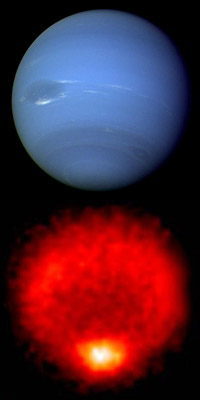The top picture shows Neptune as our eyes would see it. The bottom picture is infrared "light", which shows heat. The bright spot at the bottom of the IR image shows that Neptune's South Pole is the warmest place on the planet!
Click on image for full size
Images courtesy of NASA/JPL (visible light) and VLT/ESO/NASA/JPL/Paris Observatory (infrared).
The Poles of Neptune and Its Moons
The South Pole of the planet Neptune is a bit strange. Triton, Neptune's largest moon, also has interesting features at its poles.
Neptune is tilted on its axis by about 28°. That isn't so strange... Earth is tilted, too, by a similar amount of 23°. That means Neptune's poles take turns being in sunlight or in shadow. So Neptune has seasons, like Earth. However, Neptune takes roughly 164 years to orbit the Sun once. That means each season on Neptune lasts more than 40 Earth years! It has been summertime in Neptune's Southern Hemisphere for the last few decades. Sunlight has been warming Neptune's South Pole for many years. The South Pole of Neptune is the warmest place on the planet!
Earth is pretty much a solid ball of rock. Neptune is not; it is made up of gases and ice. Different parts of Neptune spin at different speeds. Places near its equator go around every 18 hours, but places near the poles spin around every 12 hours. Because of this, between the poles and the equator there are some very strong winds. At 70° south latitude they blow at speeds of 1,080 km/hr (671 mph)! Some of the chemicals in Neptune's atmosphere are different at the poles, too. There is much less methane, ethane and acetylene at the poles than at the equator.
Neptune's magnetic field is tilted too. It isn't lined up with Neptune's spin axis. Earth's magnetic field is tilted, too, but only by a small amount... about 11°. Neptune's magnetic field is tilted a lot more... about 47°. If Earth's magnetic field was tilted that much, the North Magnetic Pole would be somewhere south of Paris.
You might also be interested in:

How did life evolve on Earth? The answer to this question can help us understand our past and prepare for our future. Although evolution provides credible and reliable answers, polls show that many people turn away from science, seeking other explanations with which they are more comfortable.
...more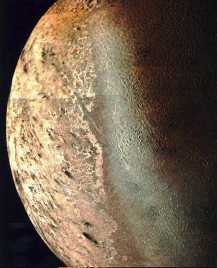
Triton was discovered by W. Lassell in 1846. Of the 8 moons, it is the 2nd farthest from Neptune, with a standoff distance of 354,800 km. Triton may be one of the largest of the icy moons, is comparable
...more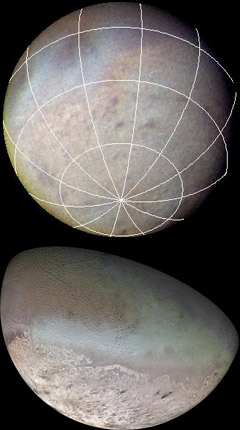
Triton is the largest moon of Neptune. It is a very unusual moon. The poles of Triton are especially interesting. Triton has a polar ice cap at the South Pole. Earth, of course, has ice caps at its poles
...more
The Earth is rotating around an axis (called its rotational axis). Some objects rotate about a horizontal axis, like a rolling log. Some objects, such as a skater, rotate about a vertical axis. The Earth's
...more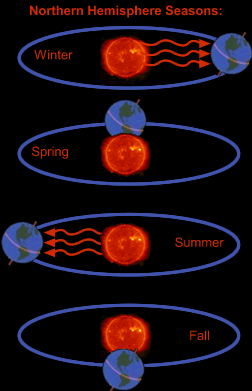
During the year, the seasons change depending on the amount of sunlight reaching the Earth as it revolves around the Sun. The seasons are caused as the Earth, tilted on its axis, travels in a loop around
...more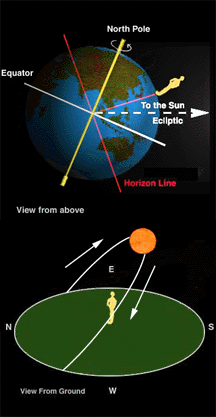
Let's pretend, for the moment, that you're the person standing on the Earth in the picture to the left, living in Topeka, Kansas, around 40° N latitude. The picture on the left shows the view from the
...more
The atmosphere of Neptune is very similar to that of Uranus, and unlike that of Saturn and Jupiter. On Jupiter and Saturn, the atmosphere is mostly composed of the simple molecules hydrogen and helium.
...more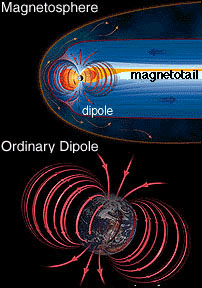
Earth has a magnetic field. If you pretended that Earth had a gigantic bar magnet inside of it (it doesn't really, of course), you would have a pretty good idea about the approximate shape of Earth's magnetic
...more


